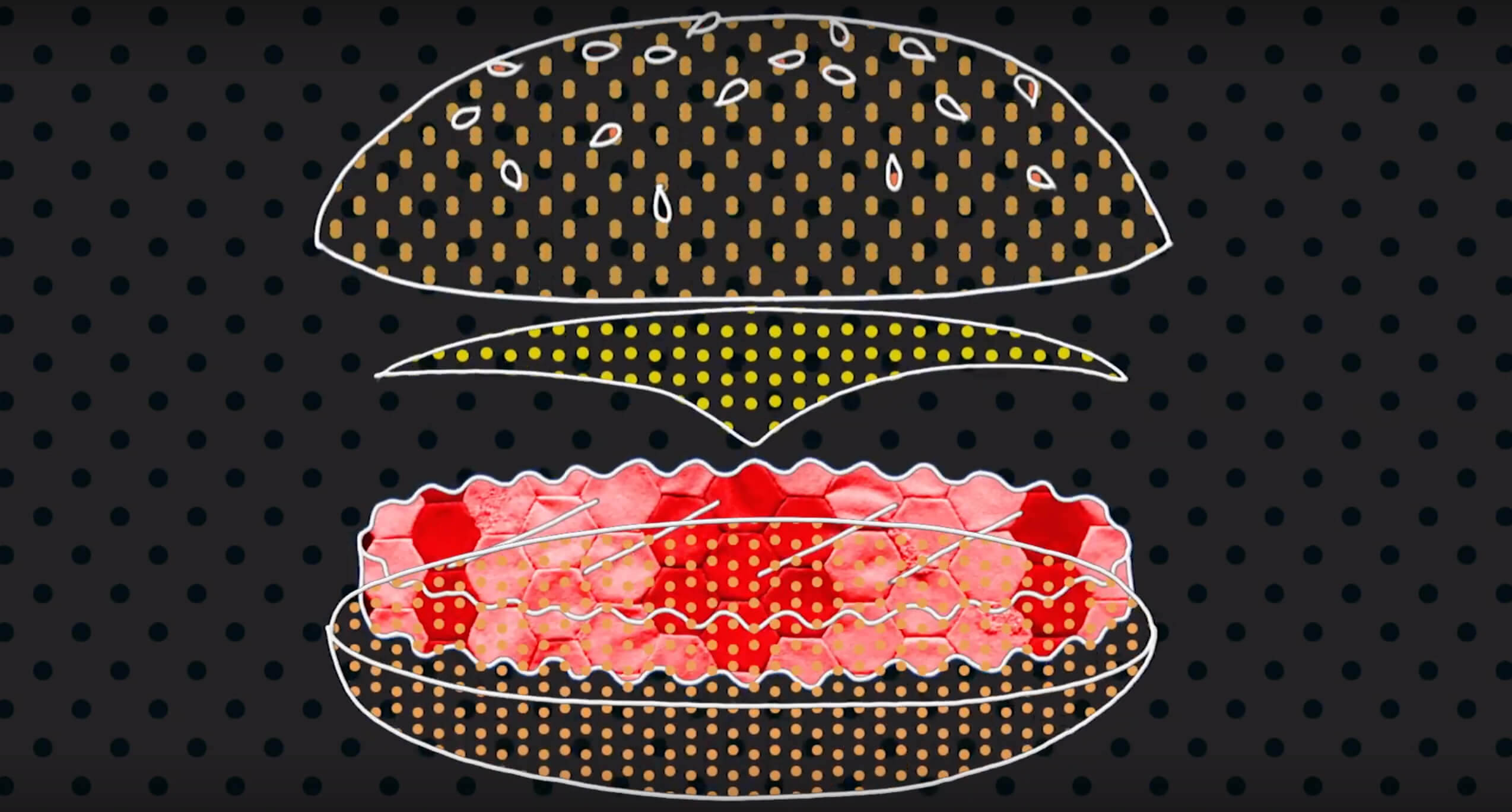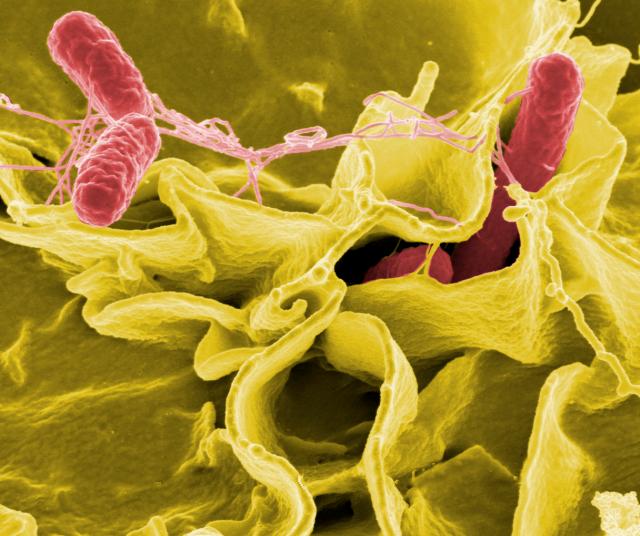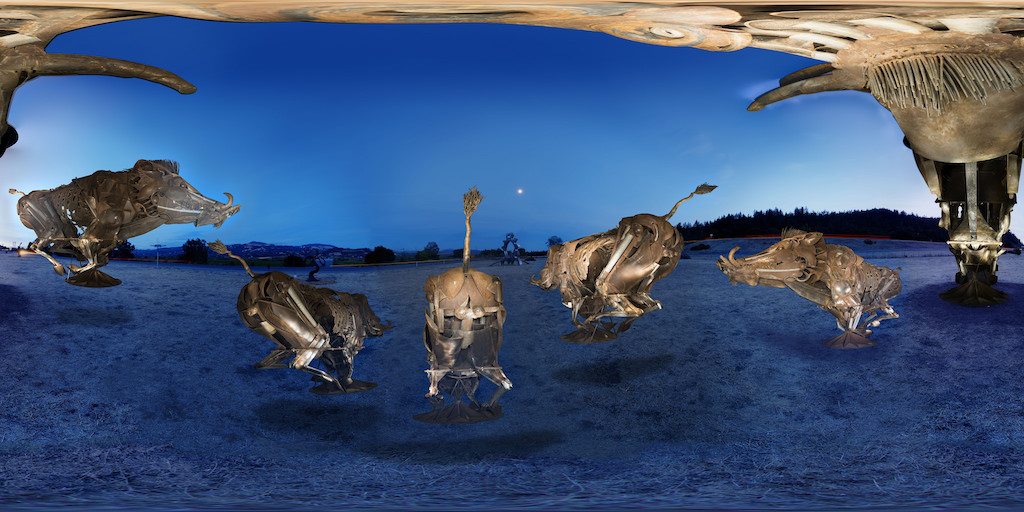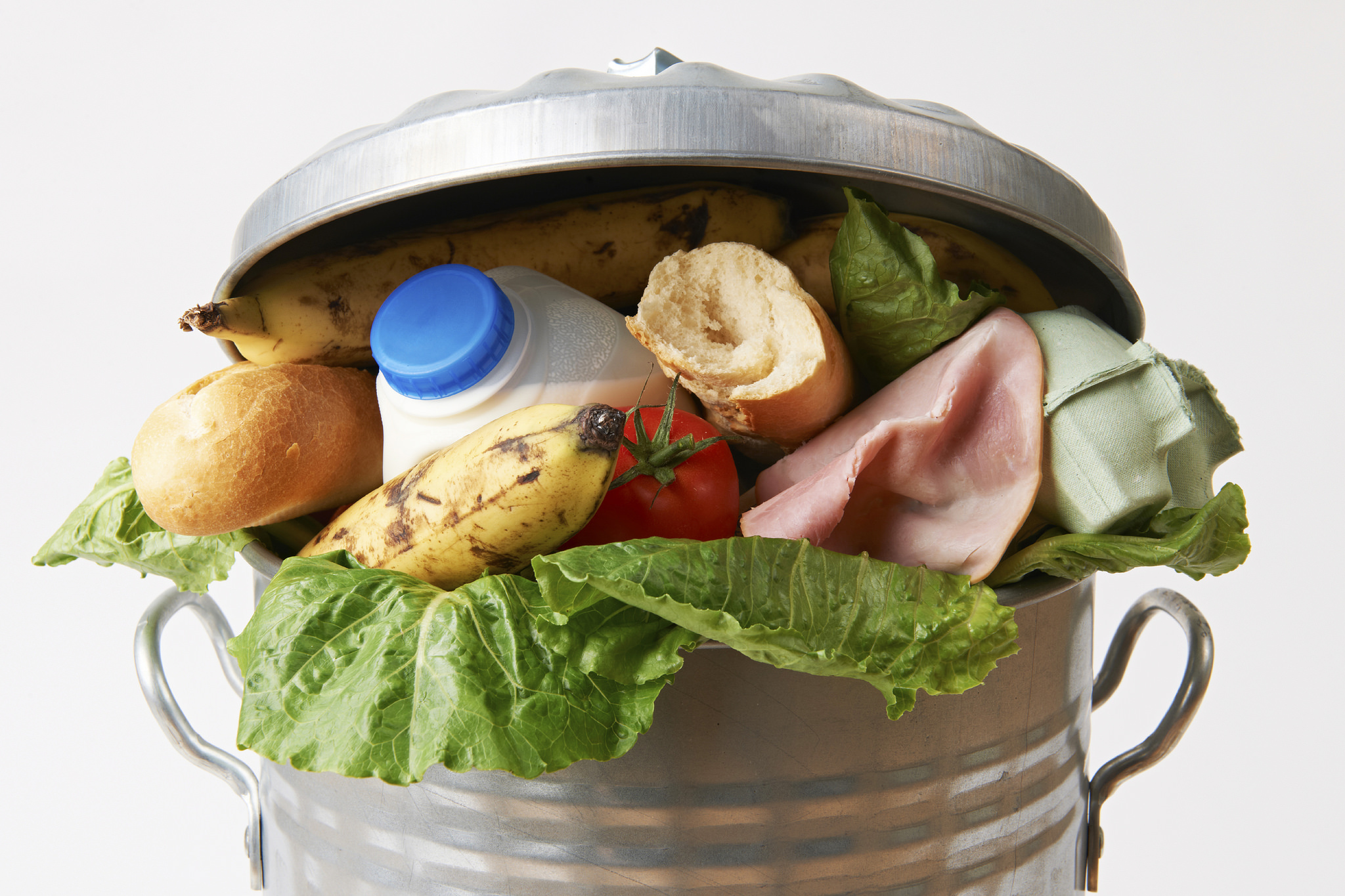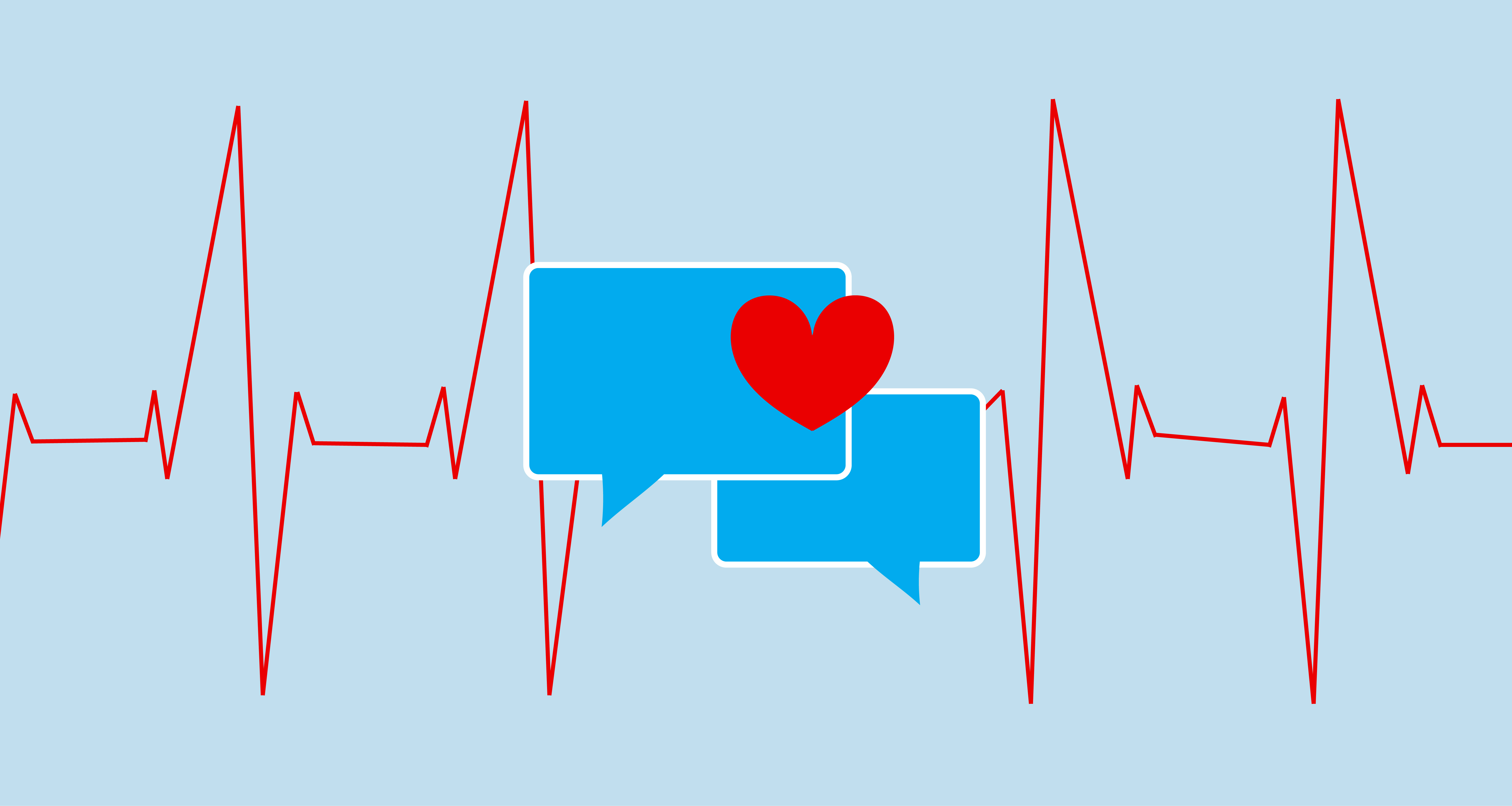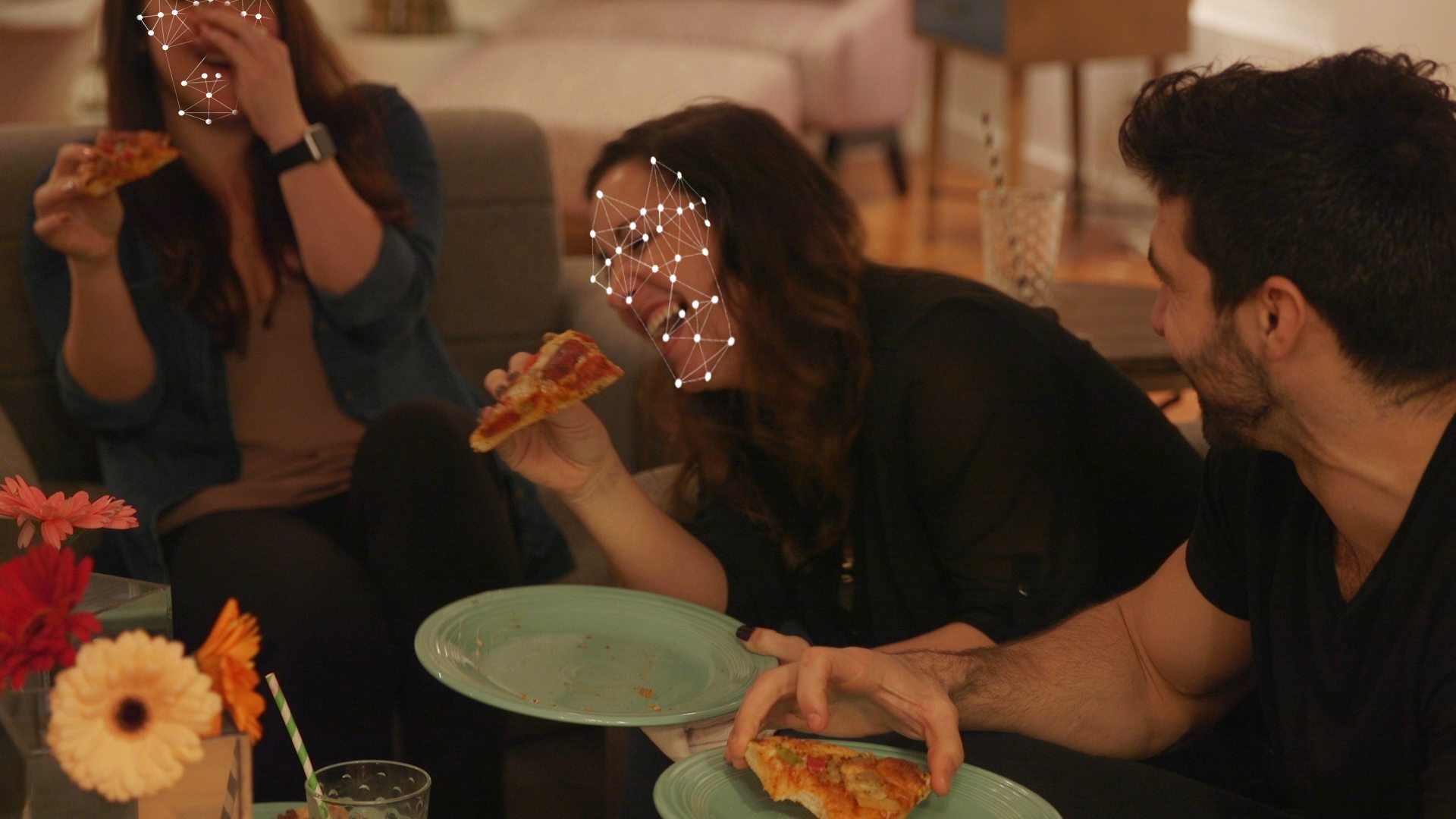
DiGiorno
There’s a saying among literary types that “happiness writes white.” It means that, while poets and philosophers spill endless ink over suffering and misery, pure, unadulterated joy somehow escapes us. After all, what can you say about happiness, really? Isn’t part of joy the way it defies language, the way some feelings can’t be expressed as much as experienced? As Emily Dickinson put it:

For Dickinson, the moments when we’re most alive—to Live, with an uppercase L—elude not only concrete articulation, but comprehension.
And yet where Dickinson failed, DiGiorno, the Nestle-owned frozen pizza company, thinks it can succeed.
In a new promotion, “The Power of Pizza,” DiGiorno tries to put happiness into words—or at least into numbers. “It’s no secret that pizza makes us happy,” the company writes in a press release. “But has anyone ever asked why?” (The footnote points to what we already “know:” that pizza makes 88 percent of people happy, according to a study funded by DiGiorno.) The “Power of Pizza,” which the company is calling a “social experiment,” purports to find out what it is about pizza that delights us, and exactly how much it elevates mood, down to the percentage point.
Here’s how the experiment worked. DiGiorno brought volunteers into a space resembling a Manhattan loft, with one key difference: there were more than 40 cameras in it. The company then asked three different groups of eight young people to have a party inside. All they had to do was agree to be filmed, cook a DiGiorno pizza, eat it, and otherwise do what they’d normally do on a Saturday night. (Minus, I guess, the booze and vials of nose beers.)
 DiGiorno
DiGiorno “With the help of facial recognition and emotion-tracking software, DIGIORNO analyzed footage to identify patterns in emotion. ‘Joy’ was classified based on indicators of happiness like smiles and eye movements.”
Unsurprisingly, the “experiment” found that eating pizza made everyone happier: 11 percent happier, to be exact. But that’s not the figure DiGiorno wants us to dwell on. It’s claiming that the biggest spikes in happiness occurred earlier in the night—not during dinner, but before it. In a press release, the company charts it out this way:
- Pizza Prep: When pizza went into the oven, everyone’s mood improved, with joy increasing up to 18 percentage points.
- That Smells Great: As smell permeated the room, partygoers were happiest, with joy increasing up to 24 percentage points.
- It’s Ready: Taking pizza out of the oven also had significant impact on the moods of partygoers, with an increase in joy up to 20 percentage points.
- Serving up Slices: When hosts cut the pizza, partygoers experienced up to an 11 percentage point increase in joy.
- Eating Pizza: As partygoers took their first bite and began eating pizza, increase in joy went up to 11 percentage points.
As DiGiorno tells it, people were actually happiest as the smell of pizza baking “permeated the room,” a sensation that made them 24 percent happier than when they walked in the door. At first, it might seem odd that DiGiorno’s calling attention to the fact that the emotional climax from the meal itself was not the main event. You might extrapolate that the food smelled better than it tasted, that it didn’t live up to expectations.
 DiGiorno
DiGiorno Joy, as it rose and fell during an evening with DiGiorno
“So here’s what we learned,” says the narrator towards the end of one of the promo videos bundled with “The Power of Pizza.” “In the end, the joy of pizza is more than a taste. It’s a sight. It’s a smell. It’s an experience. And it all starts when you put it in the oven.”
That’s a pretty amazing rhetorical gesture. Remember “swift boating,” which, unfortunately for Senator John Kerry, meant to take a politician’s greatest asset and turn it into a weakness? Maybe “DiGiornoing” is to take a product’s worst characteristic and boldly reframe it as its primary strength.
Probably the most interesting thing about “The Power of Pizza,” though, is the way it uses science to appeal to our emotions. Not that the ad actually is science. As science, it gets an F. Despite a methodology section of sorts at the end of the press release, and lots of pseudo-scientific jargon (“social experiment,” “high-resolution cameras,” and “observable increases in joy”), this is not a peer-reviewed study. We don’t know if the participants were “real people” or paid actors. We don’t even know, really, if there were results to study. For all we know, the experiment’s outcome was pre-ordained. Make no mistake, this is marketing through and through.
Still, it’s fascinating that a company of this stature—and Nestle is one of the biggest food companies in the world—feels that the best way to appeal to us is through the appearance of science. That we’ll believe the claims made about food and friendship, pleasure and desire, when they are presented to us by way of numbers. That we’ll be 24 percent happier with a DiGiorno pizza bubbling in the oven.
That’s silly, of course. Isn’t there something ludicrous about characterizing our emotions this way? As if we can map the way we feel with such scientific certainty? As though we really are completely open books? Maybe so. But that’s not going to stop companies from doing it. The evidence suggests that corporations are going to be increasingly interested in our emotional lives. Computer algorithms—like the the Google Vision software used by DiGiorno—have been watching us for years, learning to decode the lift of an eyebrow, the way lips form an o of surprise. It’s not much of a stretch to see how our faces can be a source of valuable marketing information for companies who want to study what we like. Soon, they’ll do it through our laptop cams as we watch YouTube ads for pizza. Or through home devices like Amazon’s new Echo Look, which, as it helps you to decide what to buy next, is always watching—especially when your friends come over for pizza.
I guess I’m with Emily Dickinson on this one. It could be just my knee-jerk, humanities-major reaction, but I believe we’re fundamentally mysterious, that our faces don’t always explain how we feel, that you could spend a lifetime trying to put some emotions into words, and that people will always, always surprise us. That’s neither here nor there, though. Very soon, our emotional lives are going to be big business—no matter how you slice it.

